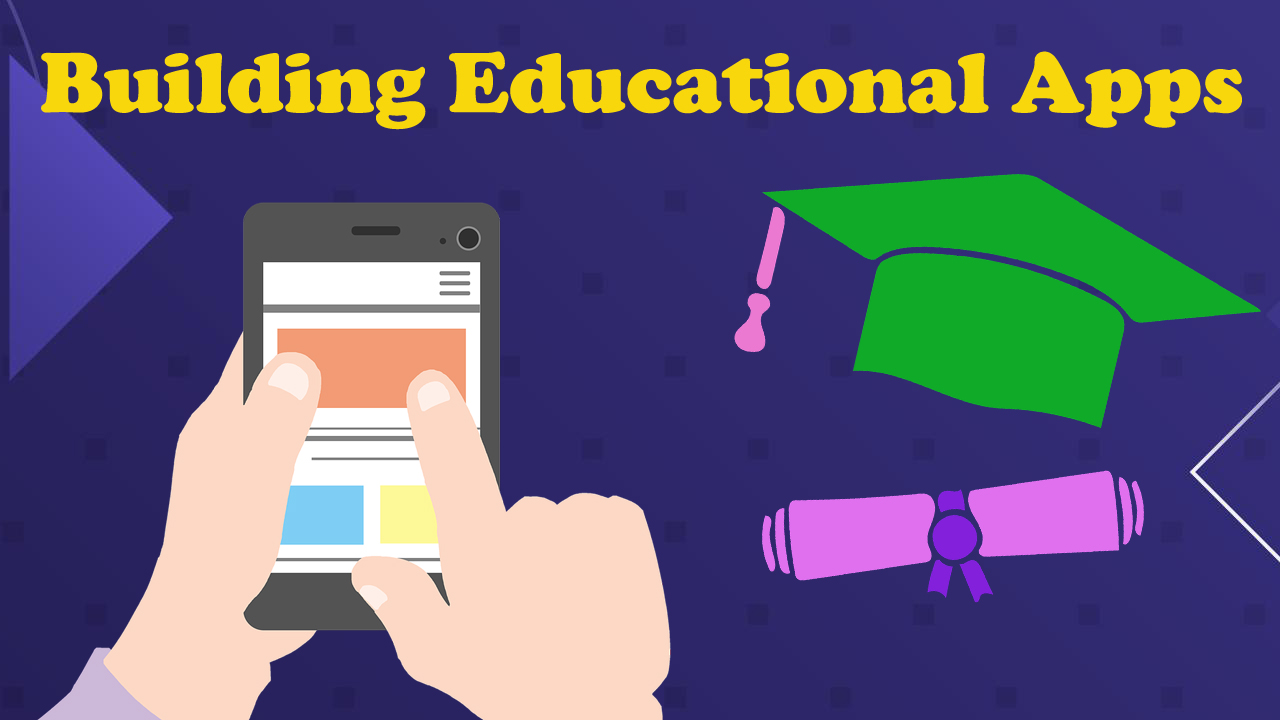We have special apps for learning especially for kids. These apps make learning more interesting and fun. But it’s important to find the right balance between having fun and learning something.
Kids are special and so are the apps they use to learn. Imagine apps with bright colors cool games and friendly characters that help children understand things better. These apps are like magical doors that open up a world of learning while having a great time.
This article explores how to create these special apps for kids. We’ll talk about why it’s important to understand what kids like to mix play with learning and choosing the right things for different ages. So let’s dive into the world of making learning an exciting adventure!
Table of Contents
Understanding the Needs of Young Learners
Tailoring Content to Capture Attention
Creating educational apps for kids is like crafting a captivating story. To truly make an impact developers must understand the magic of tailoring content to grab the attention of young minds. Children are naturally curious and eager to explore and educational apps can harness this curiosity through thoughtful content design.
- Children are drawn to bright colors and visually appealing elements. Incorporating vibrant visuals cheerful animations and charming characters can instantly captivate their attention. The use of eye-catching graphics makes learning a visually delightful experience ensuring that kids stay engaged.
- Static content is quickly forgotten but interactive elements keep children involved. Educational apps should include touch-sensitive features allowing kids to interact with the content. Tapping dragging and swiping motions create a dynamic learning environment making the educational journey feel like an exciting adventure.
- Narratives have a unique power to captivate young minds. Integrating storytelling into educational apps can make learning more relatable and enjoyable. Engaging narratives helps children connect with the content on a personal level enhancing their understanding and retention of information.
- Children have diverse learning preferences. Some may enjoy solving puzzles while others prefer listening to stories or playing games. Tailoring content to include a variety of learning formats ensures that the app caters to different preferences keeping the experience fresh and engaging for all users.
- Kids love surprises and rewards. Incorporating unexpected elements or rewarding achievements with virtual prizes can create a sense of excitement. Positive reinforcement encourages children to explore further and actively participate in the learning process.
Integrating Playful Learning Strategies

Learning does not have to be a dull task it can be as fun as playing a game. Integrating playful learning strategies into educational apps transforms the entire experience making it enjoyable and engaging for children. These strategies not only make learning fun but also enhance the effectiveness of educational content.
- Imagine turning a math problem into a thrilling challenge or a language quiz into an exciting game. Gamifying educational content adds an element of competition and accomplishment motivating kids to tackle learning tasks with enthusiasm. Points levels and badges can make the learning journey feel like an adventurous quest.
- Injecting interactivity into quizzes and puzzles turns them into engaging brain teasers. Educational apps can playfully present questions encouraging kids to actively participate in solving problems. The joy of discovering the correct answer becomes a reward in itself fostering a sense of achievement.
- Imagination is a powerful tool for learning. Educational apps can incorporate role-playing scenarios where children take on different roles and make decisions to navigate through a story. This not only enhances problem-solving skills but also encourages creativity and critical thinking in a playful setting.
- Learning becomes an adventure when creativity is involved. Apps can provide virtual canvases for drawing storytelling or building allowing kids to express themselves while absorbing educational concepts. This hands-on approach turns the learning process into a playful exploration of ideas.
- Social interaction adds an extra layer of enjoyment. Educational apps can include collaborative games where kids work together to solve challenges. This fosters teamwork communication and a sense of community making the learning experience not just educational but also socially enriching.
- Bringing real-world scenarios into the learning environment adds a practical touch. Whether it’s running a virtual store managing a garden or exploring historical places educational apps can create simulations that allow children to learn through play making abstract concepts more tangible.
Age Appropriate Challenges and Topics
When designing educational apps one of the key considerations is ensuring that the challenges and topics presented are suitable for the specific age group of the target audience. Just like clothes that fit perfectly educational content must be tailored to match the developmental stage and cognitive abilities of children.
For younger children simple challenges that involve basic concepts like colors shapes and numbers are ideal. Interactive games and activities that encourage hand-eye coordination and sensory exploration align with the developmental needs of preschoolers. As children progress to the elementary years challenges can gradually become more complex introducing fundamental subjects like mathematics language and science engagingly.
It’s crucial to strike a balance – challenges should be stimulating enough to promote learning but not so difficult that they lead to frustration. Age-appropriate topics ensure that children are exposed to content that aligns with their current knowledge base allowing for a smooth and enjoyable learning progression.
Educational apps should be like a well-paced journey introducing new challenges and topics at just the right time. By considering the age-specific needs and capabilities of young learners developers can create an educational experience that is both enjoyable and tailored to support their growth and development.
Balancing Entertainment and Educational Goals
Making Learning an Adventure
While entertainment is vital educational apps should never lose sight of their primary goal of facilitating learning. Developers must strike a balance ensuring that the entertainment elements complement the educational objectives. Incorporating educational goals seamlessly into engaging storylines or game mechanics can make the learning experience more enjoyable.
Celebrating Achievements and Encouraging Progress
Providing positive reinforcement through feedback loops can motivate children to continue learning. Reward systems badges and encouraging messages can celebrate achievements and create a sense of accomplishment fostering a positive attitude towards learning.
Simple Navigation and Intuitive Interfaces
Educational apps should have user-friendly designs that make navigation easy for children. Intuitive interfaces clear instructions and minimal distractions ensure that children can focus on the educational content without getting frustrated with the app’s functionality.
Creating a Secure Learning Environment
Safety is paramount in educational apps for children. Implementing robust parental control features securing personal information and monitoring content for appropriateness are essential steps to ensure a secure learning environment.
Incorporating Pedagogical Expertise
Collaboration with educators and subject matter experts can enhance the educational value of the app. Their input can help align the content with educational standards and ensure that the app contributes positively to a child’s learning journey.
Continuous Improvement through Feedback
Listening to User Feedback for Enhancements
User feedback is a valuable compass that guides the improvement journey of educational apps. By actively listening to users developers can enhance the user experience address concerns and continuously refine their educational offerings. Here are key points to consider when incorporating user feedback for app enhancements
- Accessibility and User-Friendly Design Feedback often highlight usability issues or areas where the app’s design may be challenging for users. Paying attention to feedback regarding navigation clarity of instructions and overall user interface helps in creating a more accessible and user-friendly design.
- Content Relevance and Engagement Users can provide insights into the relevance and engagement level of the educational content. Understanding which topics or activities resonate most with users allows developers to refine and expand content in areas that captivate the audience ensuring sustained interest and learning.
- Technical Performance and Bugs Addressing technical glitches and bugs is crucial for a seamless user experience. User feedback related to app crashes slow performance or technical issues provides developers with valuable information to optimize the app’s technical performance and ensure a smooth learning journey.
- Customization and Personalization Users often appreciate apps that allow for personalization and customization. Feedback regarding preferences difficulty levels or individual progress tracking can guide the implementation of features that tailor the learning experience to each user’s unique needs.
- Balancing Fun and Learning Feedback may shed light on the perceived balance between entertainment and educational goals. Users may express preferences for certain types of activities or suggest ways to make learning more enjoyable. Developers can use this input to fine-tune the app’s mix of fun and educational content.
- Safety and Parental Controls For educational apps catering to children ensuring safety is paramount. User feedback related to security concerns inappropriate content or suggestions for improved parental control features should be carefully considered and addressed to create a secure learning environment.
- Regular Updates and New Features Users appreciate apps that evolve and offer fresh experiences. Feedback can guide the development of updates and the introduction of new features. Continuous improvement based on user suggestions demonstrates a commitment to providing an enriched learning environment.
A Bright Future for Educational Apps
Building educational apps that balance entertainment and learning is a rewarding endeavor. By understanding the unique needs of young learners incorporating play ensuring age-appropriate content and maintaining a focus on educational goals developers can contribute to creating a generation of engaged and enthusiastic learners. As technology continues to evolve the potential for innovative and effective educational apps is limitless promising a bright future for the fusion of education and entertainment.

Dilshad Mushtaq is the founder and CEO of Best SEO Zone which is a prominent digital marketing agency based in Pakistan Since 2010. He is a professional website developer & Digital Marketer who can create any website and rank it on Google Page One.




